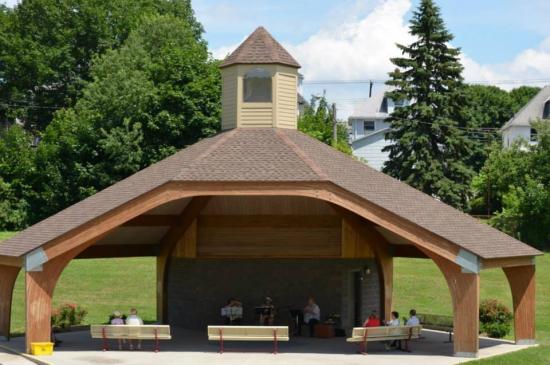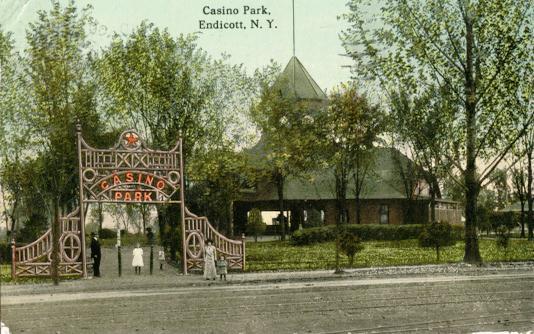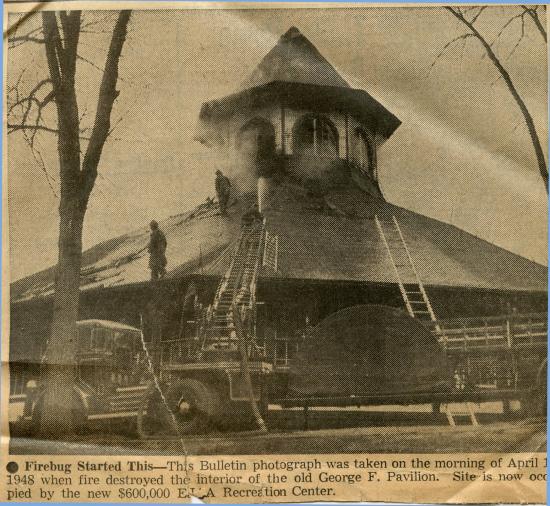In 2010, the stage in Endicott's George W. Johnson Park was dedicated. The stage has become a center for local entertainment with performances and events associated with groups including the Endicott Performing Arts Center, the Tri-Cities Youth Singers, GUSTO-A Taste of Italy, and numerous musical bands.

The stage was developed with the help of funding secured by New York State Assemblywoman Donna Lupardo and with input and support from John Bertoni (Mayor of Endicott), Jon Sarra (Co-President of the Oak Hill Avenue Improvement Corporation), Palma Longo, Beth Putrino (Former Director of Oak Hill Ave. Improvement Corp), Lou Ligouri (Executive Director, Endicott Performing Arts Center [EPAC]), Pat Foti (Creative Director, Endicott Performing Arts Center [EPAC]), Terry Burke (Sound Engineer [formerly music workshop]), and Bill Nurse (Electrical Engineer [UEHS]). Haas Landscape Architects of Binghamton and Keystone Associates under the direction of Michael Haas, RLA, Principal of HAAS Landscape Architects and George Haus, RA, Architect (formerly with Keystone Associates) designed the stage. Joe Orlando & Son Contractors constructed the stage with materials supplied by Unadilla Laminated Products. Greens Garden & Nursery did the landscaping around the stage. Scroll Down to hear an interview with New York State Assemblywoman Donna Lupardo discussing the development of the stage.
"Endicott's heritage was very important in designing the stage. It was based on the original Casino Building. Since the park is located in the Little Italy section of Endicott, it was important to highlight the history of the Village and contributions of EJ." Michael Haas, RLA, Principal of HAAS Landscape Architects.

The inspiration for the stage, the Casino Building, was the focus of Casino Park, which was located in the area of the current Union-Endicott High School. The park housed numerous recreational activities during the 1920s and 1930s. The Casino Building was the focus of the park offering an area for roller skating, dancing, and parties. In 1948, the Casino Building was destroyed by fire.

It appears that George W. Johnson Park did have a bandstand during the early 20th century. See the video below to hear descriptions of the stand. As of now, we have no photographs of the stand and would appreciate the chance to see any. It appears that the band stand in the George W. Johnson Park served the same community function of providing a venue for local entertainment as the Casino Building did in the 1920s and 1930s and the current stage does today.
This project is supported by a grant from the New York Council for the Humanities. Any views, findings, conclusions or recommendations expressed in this program do not necessarily represent those of the National Endowment for the Humanities.
